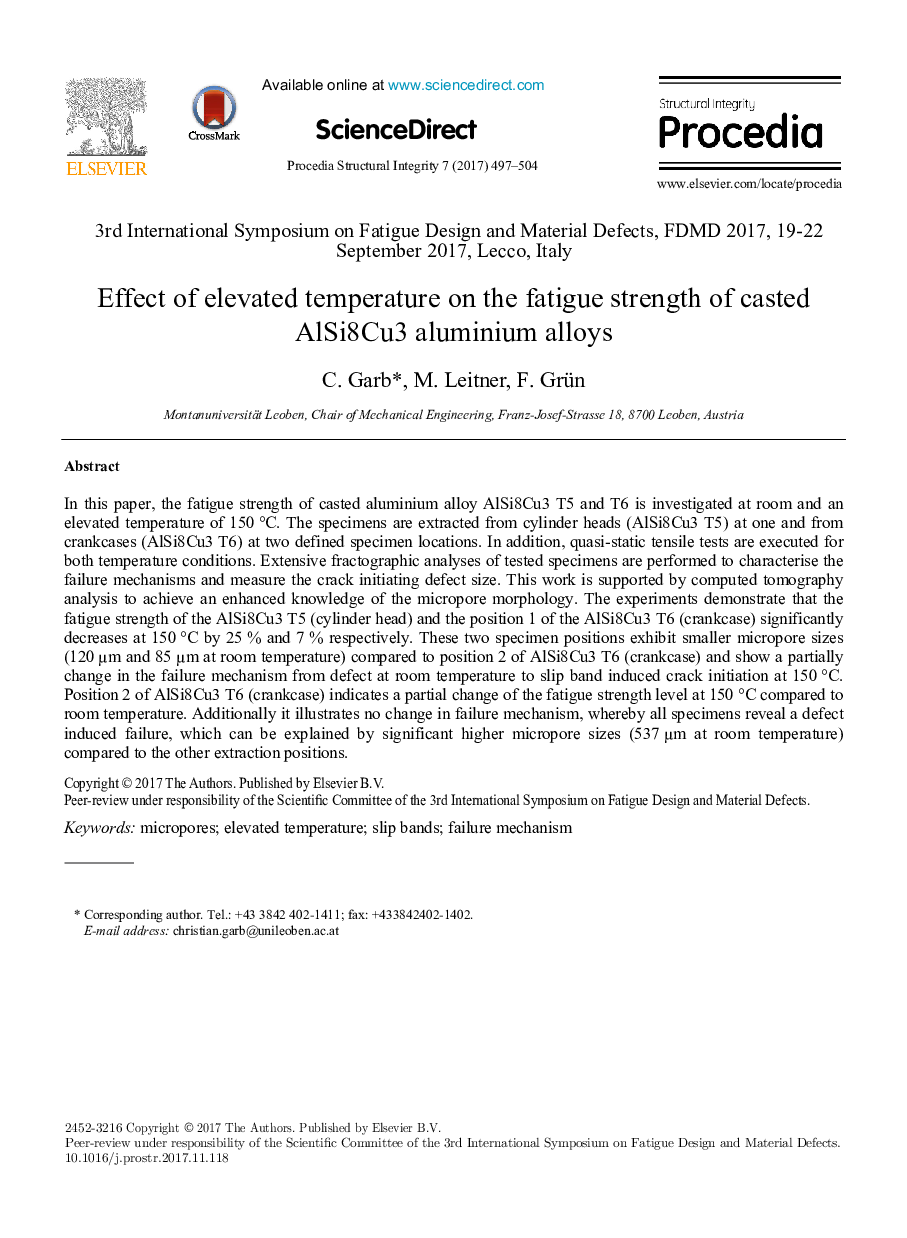| Article ID | Journal | Published Year | Pages | File Type |
|---|---|---|---|---|
| 7955014 | Procedia Structural Integrity | 2017 | 8 Pages |
Abstract
In this paper, the fatigue strength of casted aluminium alloy AlSi8Cu3 T5 and T6 is investigated at room and an elevated temperature of 150 °C. The specimens are extracted from cylinder heads (AlSi8Cu3 T5) at one and from crankcases (AlSi8Cu3 T6) at two defined specimen locations. In addition, quasi-static tensile tests are executed for both temperature conditions. Extensive fractographic analyses of tested specimens are performed to characterise the failure mechanisms and measure the crack initiating defect size. This work is supported by computed tomography analysis to achieve an enhanced knowledge of the micropore morphology. The experiments demonstrate that the fatigue strength of the AlSi8Cu3 T5 (cylinder head) and the position 1 of the AlSi8Cu3 T6 (crankcase) significantly decreases at 150 °C by 25 % and 7 % respectively. These two specimen positions exhibit smaller micropore sizes (120 µm and 85 µm at room temperature) compared to position 2 of AlSi8Cu3 T6 (crankcase) and show a partially change in the failure mechanism from defect at room temperature to slip band induced crack initiation at 150 °C. Position 2 of AlSi8Cu3 T6 (crankcase) indicates a partial change of the fatigue strength level at 150 °C compared to room temperature. Additionally it illustrates no change in failure mechanism, whereby all specimens reveal a defect induced failure, which can be explained by significant higher micropore sizes (537 µm at room temperature) compared to the other extraction positions.
Related Topics
Physical Sciences and Engineering
Materials Science
Materials Chemistry
Authors
C. Garb, M. Leitner, F. Grün,
